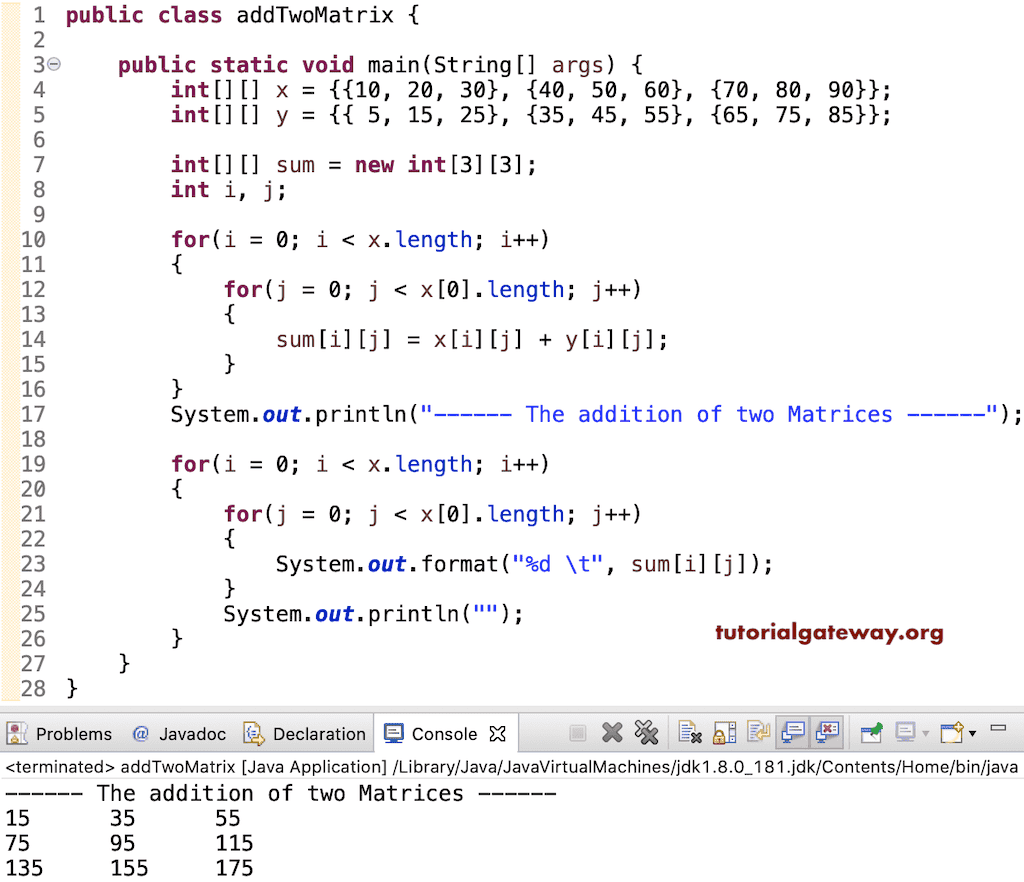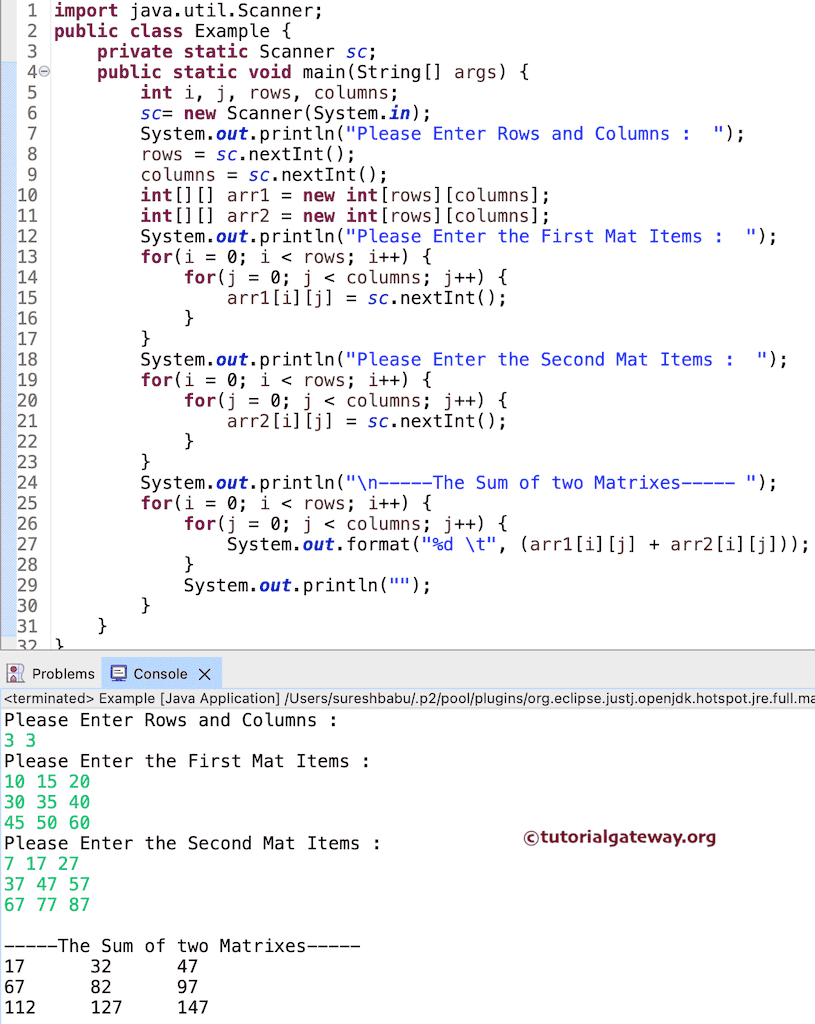编写一个带有示例的矩阵相加程序。或者编写一个 Java 程序,使用 for 循环相加两个多维数组,并以矩阵格式打印它们。
A = [ a11 a12 a21 a22 ]
B = [ b11 b12 b21 b22 ]
A + B = [a11 + b11 a12 + b12 a21 + b21 a22 + b22 ]
Java 程序使用 for 循环相加两个矩阵
在此 Java 示例中,我们声明了两个具有随机值的整数矩阵。接下来,我们使用 For 循环迭代并将 X 的每一行和列值加到 Y 矩阵中。稍后,我们使用另一个 for 循环来打印最终输出。
public class addTwoMatrix {
public static void main(String[] args) {
int[][] x = {{10, 20, 30}, {40, 50, 60}, {70, 80, 90}};
int[][] y = {{ 5, 15, 25}, {35, 45, 55}, {65, 75, 85}};
int[][] sum = new int[3][3];
int i, j;
for(i = 0; i < x.length; i++)
{
for(j = 0; j < x[0].length; j++)
{
sum[i][j] = x[i][j] + y[i][j];
}
}
System.out.println("------ The addition of two Matrices ------");
for(i = 0; i < x.length; i++)
{
for(j = 0; j < x[0].length; j++)
{
System.out.format("%d \t", sum[i][j]);
}
System.out.println("");
}
}
}

相加两个矩阵 示例 2
此 Java 示例与上述相同。但是,此 Java 代码允许用户输入行数和列数,然后要求输入项。请参考 C 语言矩阵相加程序文章以了解迭代式程序执行。
import java.util.Scanner;
public class Example {
private static Scanner sc;
public static void main(String[] args) {
int i, j, rows, columns;
sc= new Scanner(System.in);
System.out.println("\n Please Enter Rows and Columns : ");
rows = sc.nextInt();
columns = sc.nextInt();
int[][] arr1 = new int[rows][columns];
int[][] arr2 = new int[rows][columns];
System.out.println("\n Please Enter the First Mat Items : ");
for(i = 0; i < rows; i++) {
for(j = 0; j < columns; j++) {
arr1[i][j] = sc.nextInt();
}
}
System.out.println("\n Please Enter the Second Mat Items : ");
for(i = 0; i < rows; i++) {
for(j = 0; j < columns; j++) {
arr2[i][j] = sc.nextInt();
}
}
System.out.println("\n-----The Sum of two Matrixes----- ");
for(i = 0; i < rows; i++) {
for(j = 0; j < columns; j++) {
System.out.format("%d \t", (arr1[i][j] + arr2[i][j]));
}
System.out.println("");
}
}
}
